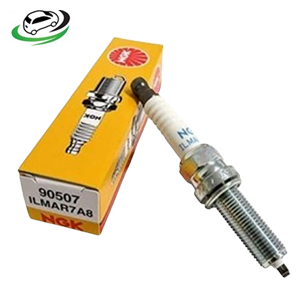Get Toyota Avensis ADT270L 2015 Front Lower Ball Joint Assy CBT-93 in Kenya
The lower ball joint is an essential component of the vehicle’s suspension and steering systems. It acts as a pivotal connector between the suspension and the wheels, allowing for controlled movement and ensuring stability and safety. Understanding the lower ball joint’s structure, function, failure modes, and maintenance practices is critical for anyone involved in vehicle maintenance or repair.
Structure and Materials
A typical lower ball joint consists of several key parts:
- Ball Stud: This is a spherical bearing that allows movement in multiple directions. The ball stud is attached to the steering knuckle.
- Socket: The ball stud fits into a socket, allowing it to pivot. The socket is usually part of the control arm assembly.
- Bearing: Between the ball and socket, there is usually a bearing surface, often made of a durable polymer or metal.
- Boot: A protective rubber boot covers the joint, keeping contaminants out and lubrication in.
- Retention Method: Depending on the design, the ball joint can be pressed, threaded, or riveted into place.
Function
The lower ball joint allows the suspension to move up and down while also permitting the steering knuckle to pivot when the vehicle is steered. This dual function is crucial for maintaining vehicle stability and handling. The lower ball joint supports the weight of the vehicle and absorbs impacts from the road, which requires it to be exceptionally durable and capable of withstanding significant forces.
Types of Ball Joints
There are two main types of lower ball joints:
- Load-Bearing Ball Joints: These are found in vehicles where the ball joint supports the weight of the vehicle. They are typically more robust due to the added stress.
- Follower Ball Joints: These do not bear the vehicle’s weight and are generally used in tandem with load-bearing joints for steering control.
Wear and Failure Modes
Lower ball joints are subject to wear due to their constant movement and the loads they bear. Common failure modes include:
- Wear and Deformation: Over time, the constant friction can cause wear on the ball and socket, leading to a loose joint. This can result in clunking noises, uneven tire wear, and poor handling.
- Corrosion and Contaminants: If the protective boot fails, dirt and moisture can enter the joint, leading to corrosion and accelerated wear. Contaminants can also cause the lubrication to break down.
- Fatigue: The repetitive stresses from driving over rough terrain or hitting potholes can cause the material to fatigue and eventually fail.
Symptoms of a Bad Ball Joint
- Clunking Noise: A loose ball joint can produce a knocking or clunking noise when going over bumps or during turns.
- Vibration: Excessive wear can cause vibration in the suspension.
- Uneven Tire Wear: A failing ball joint can cause misalignment, leading to uneven tire wear.
- Steering Play: Loose ball joints can result in steering that feels loose or has excessive play.
Inspection and Diagnosis
Regular inspection of the ball joints is crucial. Mechanics typically look for:
- Visual Inspection: Checking for damaged boots or leaking grease.
- Manual Check: Moving the wheel and suspension components to detect excessive play.
- Use of Tools: Specialized tools like dial indicators or pry bars to measure the amount of play in the joint.
Maintenance and Replacement
When a lower ball joint shows signs of wear, it should be replaced to maintain vehicle safety and performance. The replacement process generally involves:
- Safety Precautions: Ensuring the vehicle is securely lifted and supported.
- Component Removal: Removing the wheel and, if necessary, other suspension components to access the ball joint.
- Extracting the Old Joint: Using appropriate tools to press or pry the old ball joint out.
- Installing the New Joint: Pressing or bolting the new joint into place, ensuring it is properly secured.
- Reassembly and Alignment: Reassembling the suspension and checking the vehicle’s alignment.
Follow us on Facebook for more parts.




